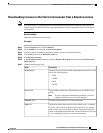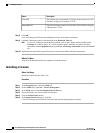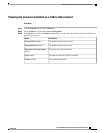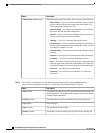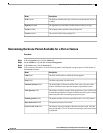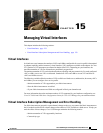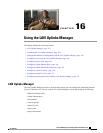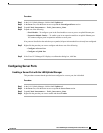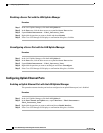
CHAPTER 15
Managing Virtual Interfaces
This chapter includes the following sections:
• Virtual Interfaces, page 259
• Virtual Interface Subscription Management and Error Handling, page 259
Virtual Interfaces
In a blade server environment, the number of vNICs and vHBAs configurable for a service profile is determined
by adapter capability and the amount of virtual interface (VIF) namespace available on the adapter. In Cisco
UCS, portions of VIF namespace are allotted in chunks called VIFs. Depending on your hardware, the
maxiumum number of VIFs are allocated on a predefined, per-port basis.
The maximum number of VIFs varies based on hardware capability and port connectivity. For each configured
vNIC or vHBA, one or two VIFs are allocated. Stand-alone vNICs and vHBAs use one VIF and failover
vNICs and vHBAs use two.
The following variables affect the number of VIFs available to a blade server, and therefore, how many vNICs
and vHBAs you can configure for a service profile.
• Maximum number of VIFs supported on your fabric interconnect
• How the fabric interconnects are cabled
• If your fabric interconnect and IOM are configured in fabric port channel mode
For more information about the maximum number of VIFs supported by your hardware configuration, see
Cisco UCS 6100 and 6200 Series Configuration Limits for Cisco UCS Manager for your software release.
Virtual Interface Subscription Management and Error Handling
For fabric interconnects grouped in a port-channel, changes to the way you connect the fabric interconnect to
the I/O module could result in a drastic change to the number of VIFs available to a blade server. To help you
track the effect of these changes, Cisco UCS Manager maintains the following metrics:
• Maximum number of VIFs supported by hardware
• Connectivity type
Cisco UCS Manager GUI Configuration Guide, Release 2.0
OL-25712-04 259



